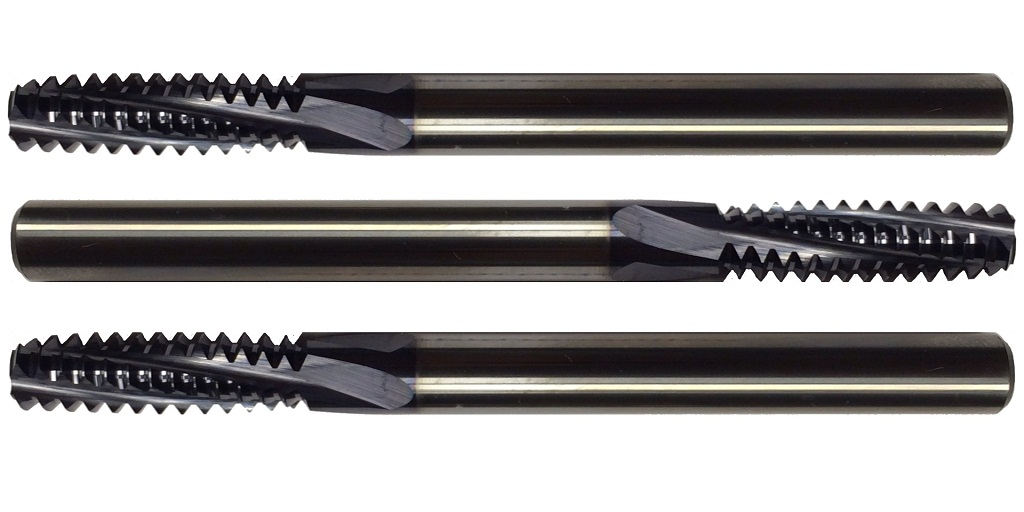
When you need to cut straight, tapered, or double-angle tapered threads on a cylindrical surface, such as a pipe thread, the best way to create them is by using a thread-cutting process. Threads are created by forming an involute curve with a precise profile of angles and included angles that engage each other to form the thread. Threads are never just straight cuts, even though they can appear to be so.
Thread mills made of tungsten carbide are used for many general machining operations because their sharp teeth don’t wear out or chip readily. Thread mills can be used on a variety of metals and other materials and require minimal setup before they’re put into operation.
How Are Threads Measured?
Threads are measured by the number of threads per inch, which is indicated in TPI (Threads Per Inch). Threads can be full form or single pitch. Threads with 15 to 40 TPI are most common for general machining operations. Thread mills come in different sizes, each of which is designed to mill a specific thread per inch (TPI).
Thread engagement is the axial distance that the thread flank contacts the thread root in one complete revolution of the thread.
Thread Rolling And Thread Forming
Thread Rolling is when threading is performed on a rotating or stationary workpiece, resulting in cylindrical thread forms in the shape of an Archimedes screw thread. Thread Rolling creates threads with less sharp thread flanks than thread milling by rolling the thread over a shape at least twice its size.
Thread forming is when thread milling operations are performed on workpieces that have an Archimedes screw thread or external thread profile to create cylindrical thread forms that have exact thread profiles and thread features. Thread forming produces threads with sharp thread flanks, while thread rolling does not.
What Are Thread Roots And Pitch?
The thread root is the bottom of a thread profile where it connects to its mating thread follower. The thread external diameter is the diameter of the thread root circle or torus at its widest point in relation to the borehole or mating thread that it fits into. The root radial face angle measures how far from perpendicular a plane containing the tool axis intersects a plane containing a segment of a helix on an external screw thread profile.
The term “thread pitch” refers to the distance between the peaks of two adjacent threads. The threads on a fastener that connect two components together are known collectively as threaded fasteners or threaded studs.
As you can see, the art of creating threads requires a lot more knowledge than average machining operations if you expect to create watertight seals. Tooling greatly affects the quality of the work and the final product; it is easy to tell carbide thread mill pipe threads from other finishes as they tend to be sharper and more defined. They also prevent material compaction typical of tapers and blind holes. Make sure you use the best carbide tools by buying directly from reputable manufacturers. Visit Online Carbide and get high-performance carbide thread mills today.


